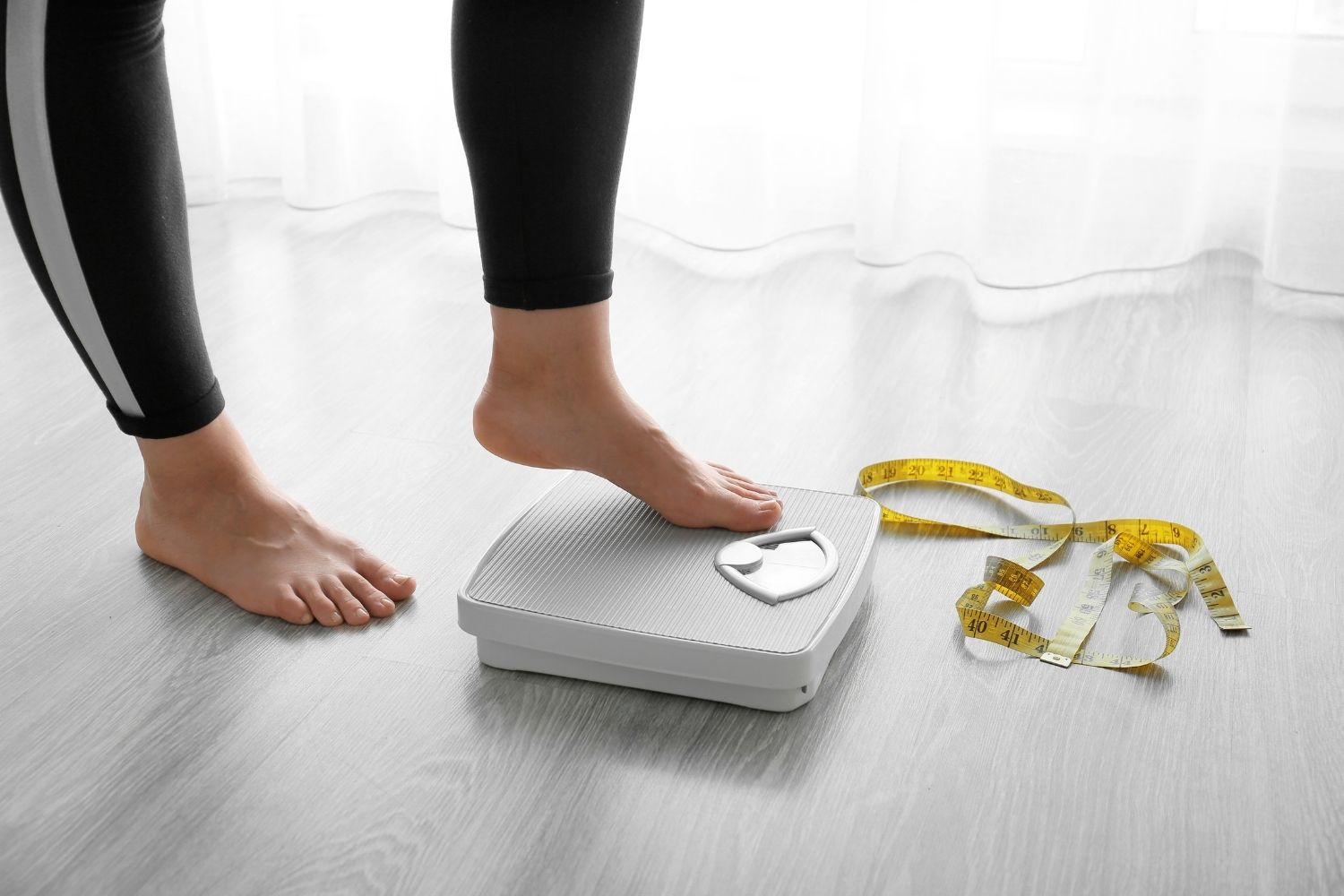5 Proven Ways to Overcome a Weight Loss Plateau Fast
You're not alone — almost every serious fat loss journey hits a plateau. But here’s the deal: it’s not your destiny.
It’s a signal you need to level up your plan. These 5 science-backed methods will help you crush the plateau and put your fat loss back into overdrive.
Ready to move forward? Let’s go.Table of Contents
- Why Weight Loss Plateaus Happen
- Reset Your Calorie Intake Strategically
- Adjust Your Training – Intensity Over Duration
- Prioritize Sleep, Recovery & Stress Management
- Switch Up Macros – Especially Protein & Carbs
- Smart Supplementation to Break the Plateau
- When to Refeed vs. Cut More – Timing is Everything
- Realistic Expectations: Fat Loss Isn't Always Linear
- Conclusion: Break the Plateau. Build Momentum
1. Why Weight Loss Plateaus Happen
Let’s get this straight — hitting a plateau doesn’t mean your body is broken. It means it's doing its job: adapting.
When you first cut calories or increase activity, your body starts shedding fat. But over time, your metabolism adjusts to the lower intake. Hormones shift, muscle mass may slightly decline, and energy output decreases as the body tries to conserve fuel.
That’s when fat loss slows or stops altogether.
- Too little protein → muscle loss, not fat loss
- Poor sleep or high stress → cortisol spikes = fat retention
- Same routine for too long → the body adapts, which kills progress
The fix isn’t starving yourself more — it’s knowing what to change and when. And that’s what the next 5 strategies are all about.
2. Strategy 1: Reset Your Calorie Intake Strategically
You’ve probably been told: just “eat less and move more.” But when you’ve already been in a deficit, cutting calories even further can backfire.

Instead of slashing 300 more calories, try a smarter approach:
🔁 Reverse Diet or Refeed?
-
Reverse Diet: Gradually increase calories to boost metabolism and energy.
If your calories are already too low (below 1200–1400 for women / 1600–1800 for men), your body may be in survival mode. A reverse diet — slowly adding 100–150 calories per week — may help reset hormonal balance and improve fat-burning capacity.
-
Refeed: Short-term increase in carbs to replenish glycogen and reset hormones.
If you’ve been dieting for over 12 weeks, consider a 1-2 week refeed where you increase carbs and calories slightly (maintenance or +10%) to reignite metabolism.
Caloric manipulation isn’t about eating less — it’s about knowing when to diet and when to maintain. Strategic breaks often lead to better long-term fat loss.
Use Nutrascia Calculator For Free to find your ideal calorie intake.
3. Strategy 2: Adjust Your Training – Intensity Over Duration
If you’re still doing the same workouts you started with — or just walking on the treadmill for 45 minutes — your body has likely adapted.
The fix? Stop adding time. Start adding intensity.

Here’s how to do it:
🔥 Swap Out Volume for Load- Replace long, steady-state cardio with interval training (HIIT) 2–3x per week.
- In strength training, focus on compound lifts (squats, deadlifts, bench press) with lower reps and heavier weights.
- Use tools like resistance bands, weighted vests, or tempo training to challenge your muscles.
- Progressively overload each week — more weight, more reps, better form.interval training (HIIT) 2–3x per week.
- Decrease rest time between sets to increase intensity.
- In strength training, go heavier with lower reps or try supersets and dropsets to push your limits.
🏋️ Nutrascia Tip:
Add Pro Boost Pre-Workout before your intense sessions to increase stamina, focus, and drive — especially if you're stuck in a slump.
The goal isn’t to do “more” — it’s to do better, harder, and smarter.
4. Strategy 3: Prioritize Sleep, Recovery & Stress Management
You can train like a beast and eat like a nutritionist — but if your sleep and stress are off, your fat loss will stall.

😴 Sleep = Hormonal Reset
- Less than 6 hours of sleep per night increases ghrelin (hunger hormone) and decreases leptin (satiety hormone).
- Poor sleep also elevates cortisol, which promotes fat storage — especially around the belly.
🧘♂️ Manage Stress = Manage Fat
- Chronic stress → chronically elevated cortisol → slower metabolism = fat retention.
- Practice mindfulness, meditation, or yoga to lower cortisol levels.
- Prioritize self-care and recovery days to recharge.
🛌 Action Steps:
- Set a consistent sleep schedule (7–9 hours per night).
- Limit blue light exposure before bed.
- Incorporate relaxation techniques (deep breathing, meditation).
- Take rest days seriously — they’re just as important as training days.
Remember: Fat loss is a marathon, not a sprint.
When you’re in a deficit, your body is under stress. Prioritize recovery to keep your metabolism firing.
Rest hard so you can train harder. Your body needs more than discipline — it needs restoration.
5. Strategy 4: Switch Up Macros – Especially Protein & Carbs
If you’ve been tracking calories but not paying attention to your macronutrient breakdown, you’re leaving results on the table.
It’s not just about how much you eat — it’s about what those calories are made of.

Here’s how to adjust your macros to break the plateau:
🥩 Prioritize Protein- Protein is the most satiating macronutrient. It helps preserve lean muscle mass during fat loss.
- Increase protein intake to 1.2–2.2 grams per kg of body weight (0.54–1 gram per lb).
- Spread protein evenly across 3–4 meals per day to maximize muscle protein synthesis.
- Carbs are your body’s primary fuel source. Too few carbs can lead to fatigue and poor performance. Carbs fuel intense workouts and keep your metabolism firing.
- Try carb cycle based on activity level: higher on training days, lower on rest days.
- Use carb cycling to manipulate energy levels and support fat loss.
- Include carbs around your workouts (especially post-training) to support recovery and energy.
- Healthy fats are essential for hormone production and overall health.
- Keep fats moderate (20–30% of total calories) to support hormone balance.
- Focus on healthy sources: avocados, nuts, seeds, olive oil.
When macros are dialed in, the body responds faster, burns cleaner, and holds onto lean mass.
Remember: macros are not one-size-fits-all. Adjust based on your body, activity level, and goals.
Use the Nutrascia Calorie Calculator to find your ideal macro breakdown.
And remember: protein is your best friend.
It’s the most satiating macronutrient and helps preserve lean muscle mass during fat loss.
6. Strategy 5: Smart Supplementation to Break the Plateau
Supplements aren’t magic, but used right, they’re a powerful edge, especially when your progress stalls.

Here’s how to use them strategically:
💥 Pre-Workout (Caffeine + Performance Blends)- Use a pre-workout with caffeine and performance-enhancing ingredients to boost energy, focus, and endurance for high-intensity sessions.
- Helps you push harder, lift heavier, and burn more.
- Take 30 minutes before workouts for maximum effect.
- Try Pro Boost Pre-Workout to reignite your intensity when motivation dips.
- Protein powder is a convenient way to hit your daily protein goals with fewer calories.
- Use whey protein post-workout for fast absorption and muscle recovery.
- Use casein protein before bed for slow digestion and overnight recovery.
- Try Pro Whey Protein for post-workout recovery and Advanced Casein for overnight muscle repair.
- Fat burners can help boost metabolism, increase energy, and suppress appetite.
- Look for ingredients like caffeine, green tea extract, green coffee extract, and L-carnitine.
- Use them strategically to break through plateaus or when energy dips.
- We are preparing for a revolutionary Fat Burner to launched soon, stay tuned..
- Creatine is a well-researched supplement that helps increase strength, power, and muscle mass.
- It helps replenish ATP (energy) stores, allowing you to push harder in the gym.
- Helps maintain muscle mass and training volume when calories are low.
- Take 3–5 grams daily, with or without food.
- Try Nutrascia Mono Purre Creatine to boost your performance and recovery.
Supplements are a tool, not a magic pill. Use them to enhance your results, not replace hard work.
Supplements alone won’t break your plateau — but paired with smart training and nutrition, they unlock your next level.
7. When to Refeed vs. Cut More – Timing is Everything
Here’s where most people go wrong — when progress stalls, they panic and slash calories even more. But sometimes, eating more is actually the move.

- You’ve been dieting consistently for 6–12+ weeks.
- When your energy levels are low and workouts suffer.
- When you’re feeling mentally fatigued or burned out.
- When you’re experiencing extreme hunger or cravings.
- You’ve hit a plateau despite strict consistency.
A refeed day (or weekend) where you bump up calories, mainly from clean carbs, can restore leptin levels and metabolism. It’s a reset — not a cheat.
❌ When to Cut More:- You’ve been loosely following your diet, with frequent “off-plan” meals.
- You’ve stalled but still have room to tighten your tracking.
- Your calories are still relatively high (above maintenance).
- When your energy levels are stable and workouts are strong.
- When you’re feeling mentally sharp and focused.
- When you’re not experiencing extreme hunger or cravings.
Alternate diet phases with maintenance or refeed weeks every 8–12 weeks to keep your body and mind sharp.
8. Realistic Expectations: Fat Loss Isn't Always Linear
Let’s get one thing clear — fat loss isn’t a straight line. Some weeks you’ll drop 2 pounds, others you’ll stall, and sometimes the scale may go up (even when you’re doing everything right).
This doesn’t mean your plan isn’t working. It means your body is adapting — and possibly retaining water, rebuilding tissue, or just fluctuating naturally.

- Water retention from sodium, carbs, or hormonal changes.
- Muscle gain from strength training (especially if you’re new to it).
- Digestive changes (bloating, constipation) from dietary shifts.
- Stress and sleep fluctuations affecting cortisol levels.
- Body measurements (waist, hips, arms, legs).
- Progress photos (every 4–6 weeks).
- How your clothes fit.
- Energy levels and workout performance.
- Overall mood and mental clarity.
Remember: losing inches matters more than losing scale weight.
Fat loss is a journey, not a sprint. Focus on the process, not just the number on the scale.
Track your progress in multiple ways — not just the scale. Use measurements, photos, and how you feel to gauge success.
And remember: the scale is just one tool.
9. Conclusion: Break the Plateau. Build Momentum.
Plateaus are frustrating — but they’re also a sign of progress. They mean your body has changed, adapted, and is ready for its next challenge.
With the right mix of training intensity, recovery, nutrition, and smart supplement use, you can reignite fat loss, preserve muscle, and come back stronger than ever.
Don’t fall for the myth that “nothing works.” That’s rarely true. Most often, you’re one adjustment away from moving forward again.
Stay patient. Stay consistent. And most importantly — stay strategic.
Remember: fat loss is a marathon, not a sprint.
Your plateau isn’t permanent. Your results aren’t done.
They’re just getting started.
And if you need help, we’re here for you. Check out our NuFit Program for personalized coaching and support.
Let’s crush those goals together!



Leave a comment
All comments are moderated before being published.
This site is protected by hCaptcha and the hCaptcha Privacy Policy and Terms of Service apply.